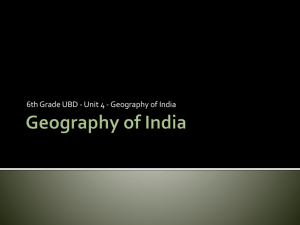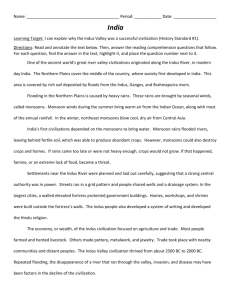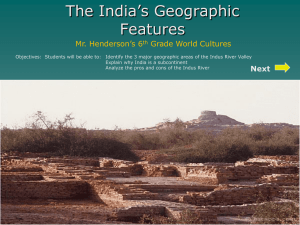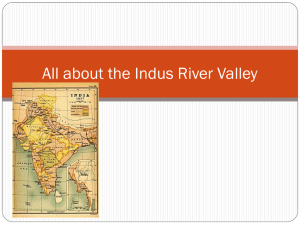File
advertisement
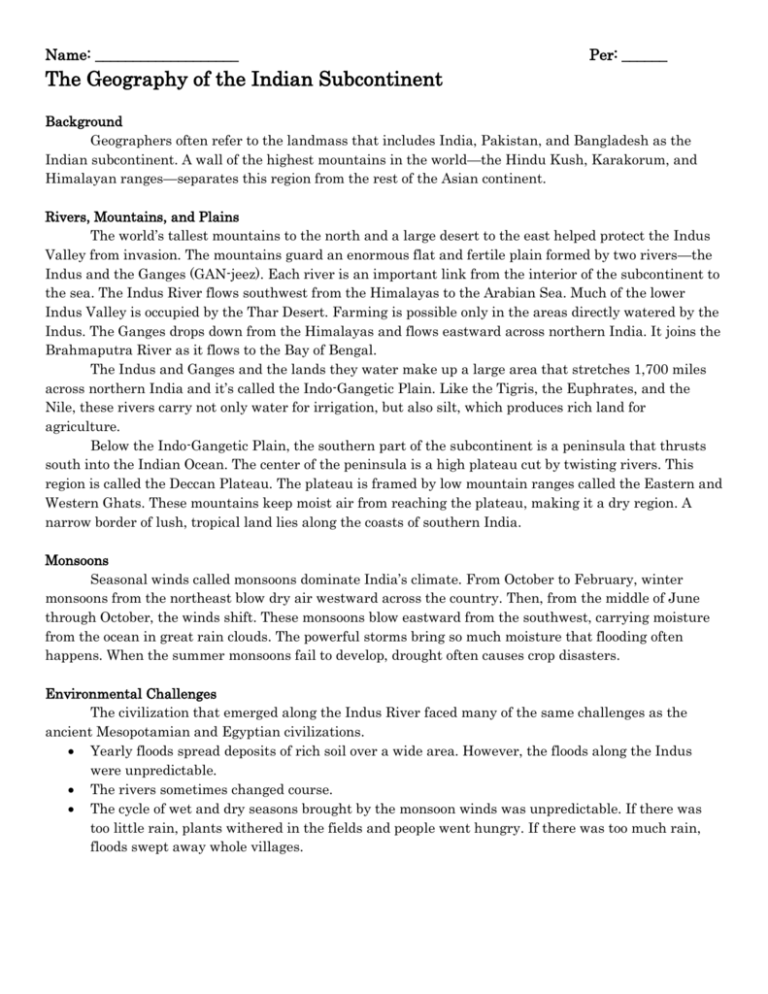
Name: ___________________ Per: ______ The Geography of the Indian Subcontinent Background Geographers often refer to the landmass that includes India, Pakistan, and Bangladesh as the Indian subcontinent. A wall of the highest mountains in the world—the Hindu Kush, Karakorum, and Himalayan ranges—separates this region from the rest of the Asian continent. Rivers, Mountains, and Plains The world’s tallest mountains to the north and a large desert to the east helped protect the Indus Valley from invasion. The mountains guard an enormous flat and fertile plain formed by two rivers—the Indus and the Ganges (GAN-jeez). Each river is an important link from the interior of the subcontinent to the sea. The Indus River flows southwest from the Himalayas to the Arabian Sea. Much of the lower Indus Valley is occupied by the Thar Desert. Farming is possible only in the areas directly watered by the Indus. The Ganges drops down from the Himalayas and flows eastward across northern India. It joins the Brahmaputra River as it flows to the Bay of Bengal. The Indus and Ganges and the lands they water make up a large area that stretches 1,700 miles across northern India and it’s called the Indo-Gangetic Plain. Like the Tigris, the Euphrates, and the Nile, these rivers carry not only water for irrigation, but also silt, which produces rich land for agriculture. Below the Indo-Gangetic Plain, the southern part of the subcontinent is a peninsula that thrusts south into the Indian Ocean. The center of the peninsula is a high plateau cut by twisting rivers. This region is called the Deccan Plateau. The plateau is framed by low mountain ranges called the Eastern and Western Ghats. These mountains keep moist air from reaching the plateau, making it a dry region. A narrow border of lush, tropical land lies along the coasts of southern India. Monsoons Seasonal winds called monsoons dominate India’s climate. From October to February, winter monsoons from the northeast blow dry air westward across the country. Then, from the middle of June through October, the winds shift. These monsoons blow eastward from the southwest, carrying moisture from the ocean in great rain clouds. The powerful storms bring so much moisture that flooding often happens. When the summer monsoons fail to develop, drought often causes crop disasters. Environmental Challenges The civilization that emerged along the Indus River faced many of the same challenges as the ancient Mesopotamian and Egyptian civilizations. Yearly floods spread deposits of rich soil over a wide area. However, the floods along the Indus were unpredictable. The rivers sometimes changed course. The cycle of wet and dry seasons brought by the monsoon winds was unpredictable. If there was too little rain, plants withered in the fields and people went hungry. If there was too much rain, floods swept away whole villages. Directions: Complete the Q-A-R-D sheet by using the reading “The Geography of the Indian Subcontinent” Question How does silt affect the Ancient Indian civilizations? How does the Indus River help civilizations to develop throughout the Indus River Valley? How does the Indian subcontinent differ is areas of climate, geography, and landscape? How do the geographical features of the Indus civilization compare to other Ancient civilizations at the time? How did Monsoons affect the Indus civilizations? Explain the environmental challenges that the Indus River faced. Just focusing on geography: In your opinion, Which ancient civilization would you choose to develop in, and why? Answer Response Discussion

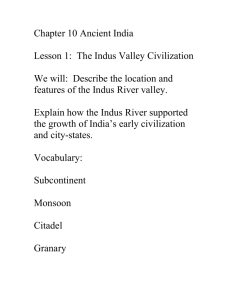

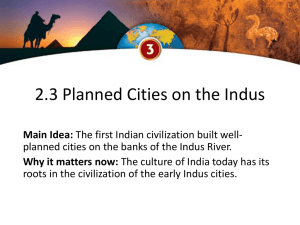
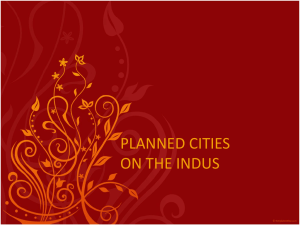
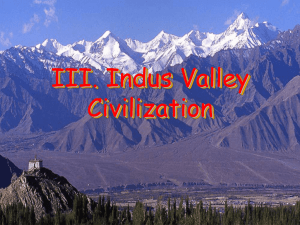

![Indus[1] - ridgeaphistory](http://s3.studylib.net/store/data/006736077_1-c59280ecd30594bac8ab21ec7bce4db4-300x300.png)
